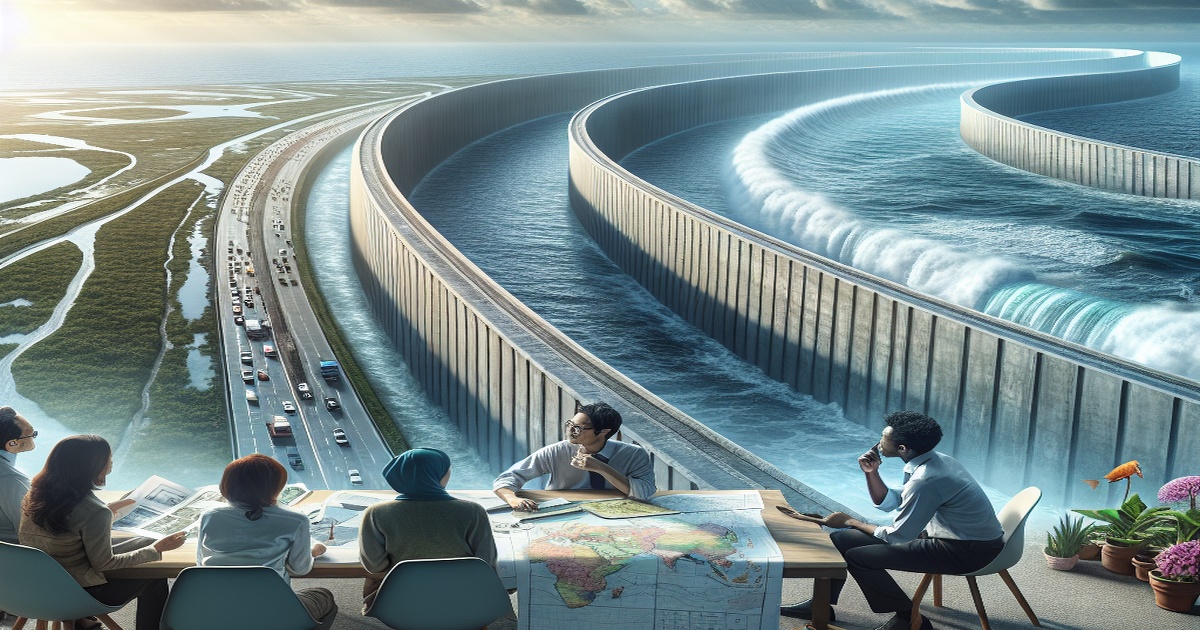On June 25, 2025, a girl is seen braving the aftermath of a flooded street in Muara Angke, North Jakarta, where a ‘bajaj’ navigates through the waterlogged area. This imagery highlights the growing concerns surrounding Indonesia's initiatives to address chronic flooding, evidenced by the revival of the controversial "Giant Sea Wall" project.
The fate of this extensive seawall endeavor, which aims to safeguard coastal communities, mirrors the challenges encountered by the prior administration's Nusantara Capital City (IKN) megaproject. Entering the eighth decade of independence, Indonesia is still grappling with critical environmental issues, particularly as its most populous island, Java, continues to sink.
Former President Joko "Jokowi" Widodo attempted to address these problems by relocating the capital to East Kalimantan, but President Prabowo Subianto has shown less enthusiasm for this strategy. Instead, he has refocused efforts on the seawall project as part of the new national strategic projects in the 2025-2029 National Medium-Term Development Plan. However, this pivot raises questions about the wisdom and priorities of the new administration in comparison to its predecessor.
Recent studies reveal that parts of Jakarta are sinking at alarming rates, with some areas experiencing subsidence between 1 to 11 centimeters each year due to factors such as excessive groundwater extraction. More than 150 million people inhabit Java, many of whom reside along its vulnerable northern coast, making the idea of a coastal barrier increasingly urgent.
Despite these pressing needs, clear plans for the seawall remain vague. The concept includes a potential reclamation project that could transform the structure into a livable area, supporting both residential and commercial zones. President Prabowo indicated that funding should come from both the central government and local authorities, though questions arise about the involvement of other northern coastal regions in financing the seawall.
Environmental advocates have voiced strong concerns regarding the seawall's vague design and potential ecological impact. The failures of smaller sea dikes in Jakarta, which were ineffective against flooding in areas like Muara Karang and Muara Angke, further fuel skepticism about the new project. Additionally, past infrastructure projects have shown the government’s inadequate attention to environmental ramifications, raising fears of similar outcomes for the seawall.
Critics argue that the current administration may lack the financial resources and know-how required to execute such an ambitious project. Unless more thorough planning is undertaken, and qualified experts and investors are engaged, the seawall endeavor risks becoming another unfinished mega-construction project that fails to deliver on its promises.







5 Comments
Africa
The seawall offers a practical, tangible solution to protect Jakarta's residents. This will reduce flooding.
Bermudez
The seawall design should be planned and optimized, that should be the goal.
Mariposa
This project will create the jobs which are needed for the residents.
Muchacha
This plan feels rushed and underfunded. Where will the money really come from?
Bella Ciao
Addressing Java's sinking problem is crucial. This seawall project is a bold step forward.